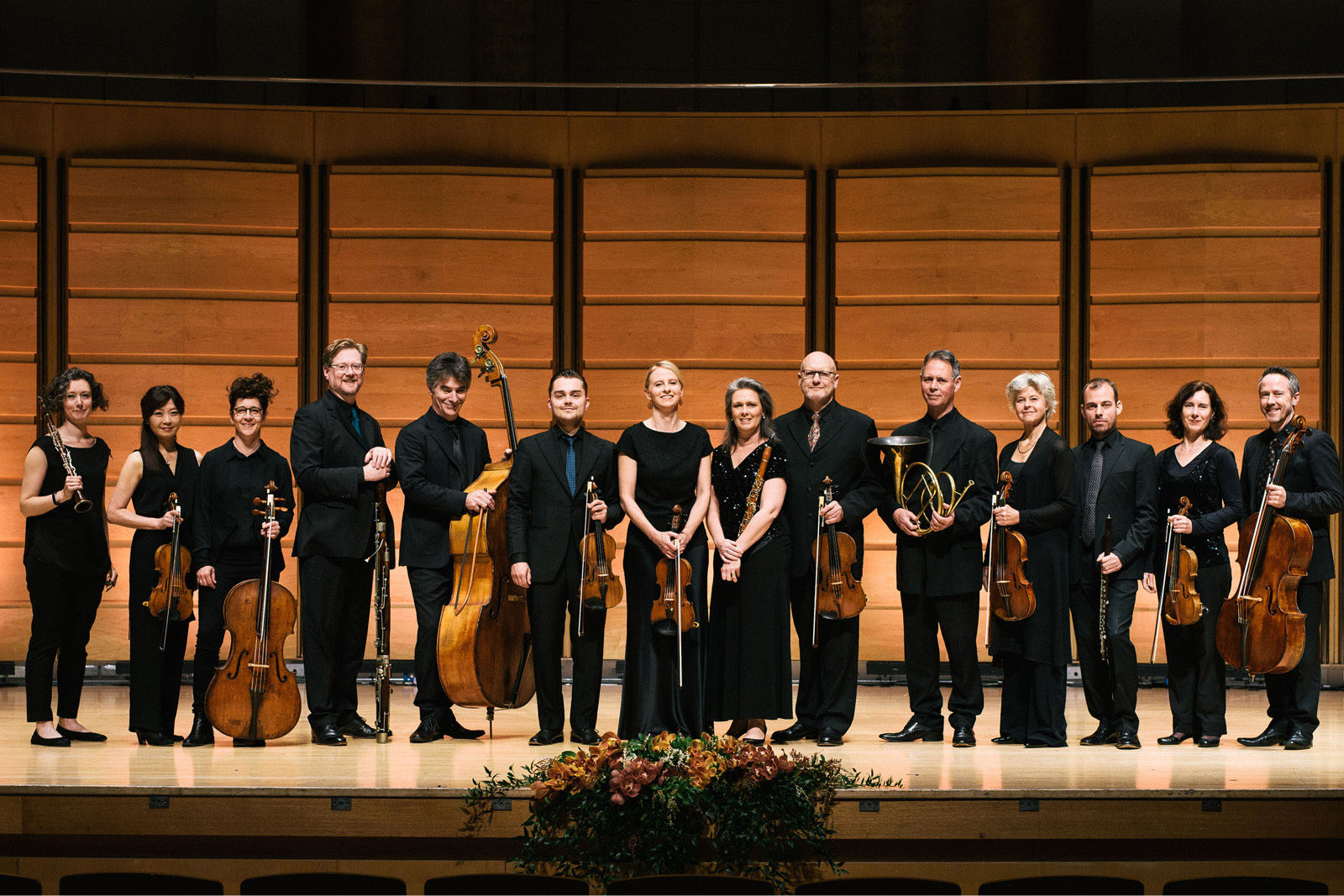The Australian Romantic & Classical Orchestra has carved out a niche in Australia’s Historically Informed Performance scene by tackling the post-Baroque orchestral repertoire, but it’s often the ensemble’s chamber offerings that really shine, giving audiences a chance to hear the unique colours of individual 18th-century – or in the case of New Constellations – 19th-century instruments. In Sydney’s City Recital Hall, Co-Artistic Directors Rachael Beesley and Nicole van Bruggen and their band brought these instruments to bear on Mendelssohn’s Op. 20 Octet and a nonet version of Brahms’ Serenade No 1.
 The Australian Romantic and Classical Orchestra. Photo © Nick Gilbert
The Australian Romantic and Classical Orchestra. Photo © Nick Gilbert
Led by ARCO’s regular guest director, Berlin violinist Jakob Lehmann, the eight players gave the opening of the Mendelssohn Octet for strings – considered the composer’s first masterpiece, with his Overture to A Midsummer Night’s Dream following close on its heels – an idyllic warmth, evoking the garden where such music was dreamt up. In the solo lines, Lehmann’s sound was singing without being overbearing, balanced nicely by the cellos, and gradually becoming more impassioned – with some virtuosic flourishes and a touch of portamento along the way. Simon Oswell’s viola lines brought the Andante to a close with dark, earthy mystery, while the scurrying, elfen Scherzo saw the musicians make magic with anxious dissonances, the music adorned by flickering ornamental figures from Lehmann. Guttural roaring from the cellos (Natasha Kraemer and Daniel Yeadon) kicked off a barnstorming account of the Presto, the rapport between the musicians – and their joy in this music – obvious, and combined with Lehmann’s light touch and humour, made for an enjoyable performance.
Brahms reworked the chamber piece that would become his Serenade No 1 in D Major, Op. 11, for orchestra at the suggestion of Clara Schumann, and while he is thought to have destroyed the original, there have been several recreations of the nonet for winds and strings, divined speculatively from the orchestral version. Chamber versions of works we know better in orchestral form can sound stripped back, all musical bone and sinew, and while there was a leanness to this arrangement – a collaborative effort by the members of the ensemble – it captured a sense of the term Serenade’s earlier usage, as occasional, festive, and often outdoor music. The opening of the first movement, for instance, saw horn, clarinets and flute shine over the drone from the strings, in a performance full of colour and zest. Amidst the music’s brightness, Strasbourg Romantic flute specialist Georges Barthel’s clear, sweet-toned lines with London bassoonist Robert Percival were a particular highlight. While there was some uneasiness of intonation in the lilting second movement, the execution was otherwise crisp and precise throughout, and the rich sound the four string players produced in the Adagio non troppo belied the reduced forces. There was more passion from Lehmann in the Menuettos while the final two movements exhibited a boisterous, folky energy, from winds and strings alike.
The 19th-century saw myriad innovations in wind instruments – Barthel’s flute, for instance, is closer in many ways to the modern instrument, with more keys than those used in JS Bach’s day – but Brahms, for whatever reason, favoured the natural horn over its valved equivalent. A special mention therefore must go to Darryl Poulsen, who brought athletic virtuosity and deftly painted colour to an instrument that had fallen out of favour even when Brahms was writing for it.
The Australian Romantic & Classical Orchestra performs New Constellations in Melbourne on August 22, Brisbane on August 24, the Sunshine Coast on August 25. ARCO presents Voyage of Musical Discovery: Dynamics & Expressive Techniques at Sydney’s City Recital Hall on August 19











Comments
Log in to join the conversation.